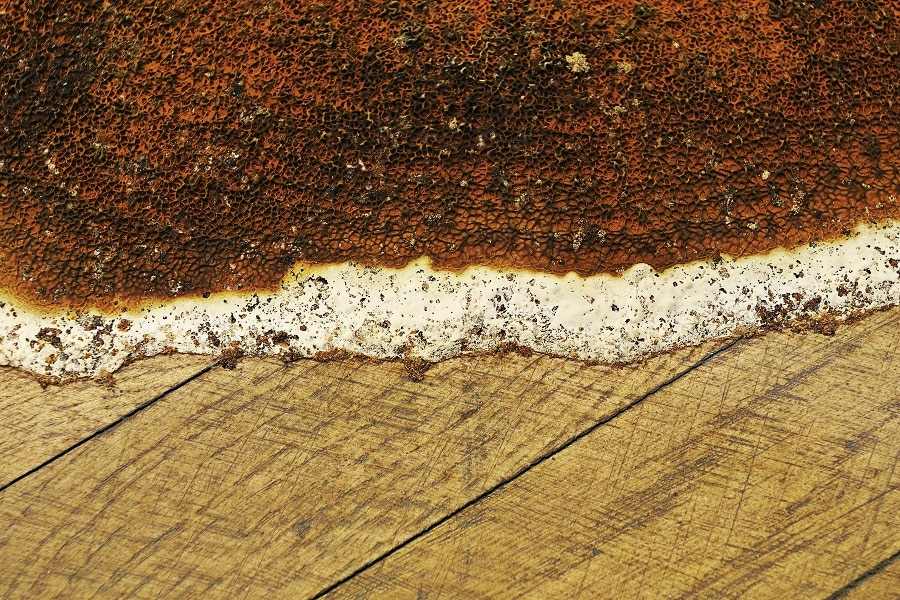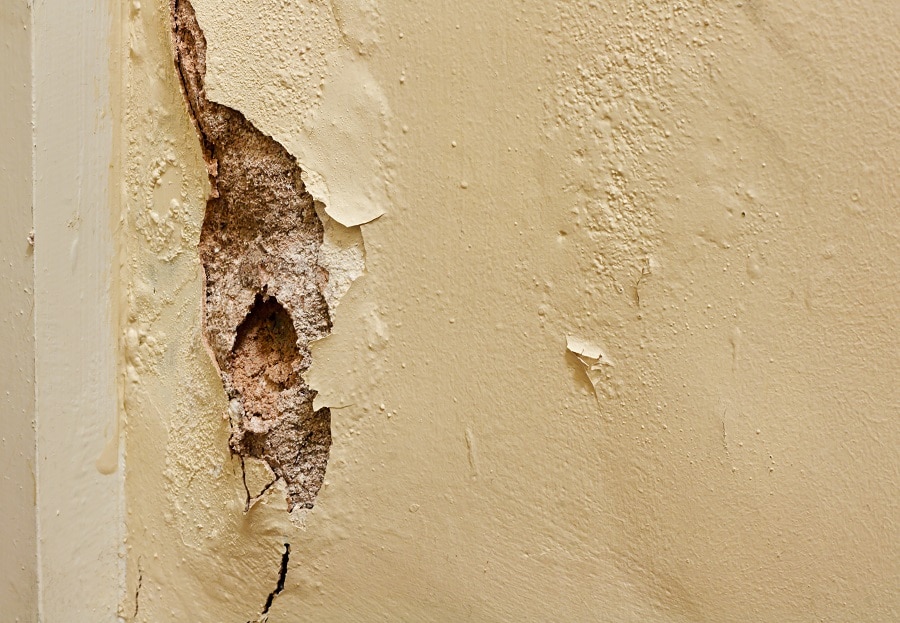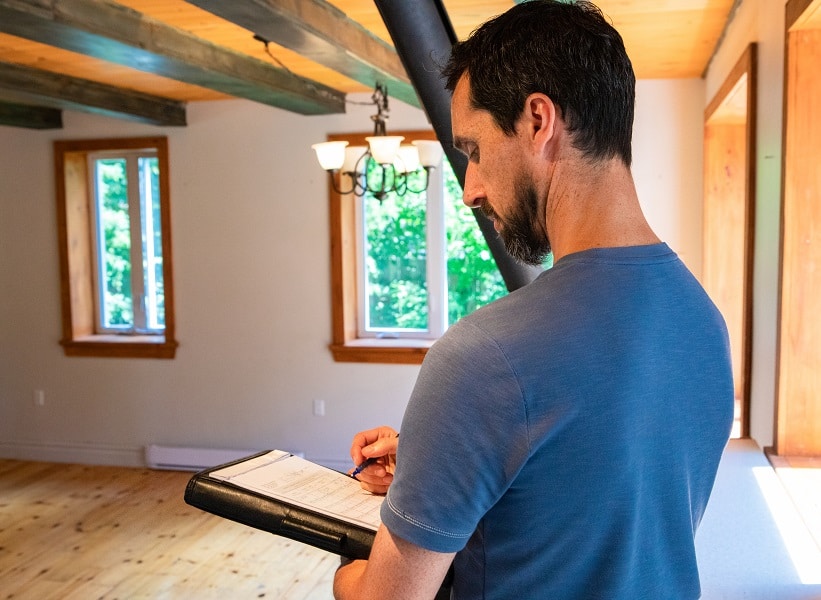What is dry rot?
Dry rot is the general word used for wood-decay fungus. As Mycelium eats wood, dry rot yields dust particles, decomposition of wood and dry rot thrive while wood is cracked by Sporocarp (fungi). Dry Rot fungal spores require a suitable place to land and start their colonies before spreading through the underlying wood. Dry rot spores can be present in the soil and already affected old woods.
It also means that dry rot cannot live in so-called “humidified” lumber that is kept at 15% moisture with a wetted surface. Dry Rot causes significantly greater damage than Wet rot, you may be shocked to hear that dry rot fungus can attack the structural timber in your property whilst remaining undetected. It often happens where you don’t look. It could be under the plaster, beneath your floorboards, or even in your loft. And while you might be tempted to ignore the signs, it’s crucial to identify them and take action immediately.
Our Guarantee
- upto 30 year guarantee
- customer focused team
- 20 years combined experience
- portfolio of satified customers
- attention to detail
- Construction line accreditation
- public liability insurance
- CHAS accreditation
What is the difference between dry rot and wet rot?
Dry rot and wet rot are two different kinds of fungus that can destroy wood if left untreated. The biggest difference between wet and dry rot is the significant moisture content that wet rot needs to spread. Wet rot spreads quicker, which means it can consume more of your property much faster than dry rot. That’s right because timber based products never come into contact with mycelium – the fungus that causes Dry Rot to form. Dry rot fungus can be “silent”, but it is very active and spreads incredibly quickly once it has taken hold in a property. Wet rot fungus, on the other hand, happens more frequently but is less serious, usually rotting is limited to areas where the wood becomes and stays wet.
Call Our Sussex Damp Experts team now for quote, consultation and advice:
Call on 01273 257 765.
What are the causes of dry rot?
A number of fungi cause dry rot. Serpula Lacrymans is the most common one in Cuckfield. it can spread from your home’s walls to the floors, and even the plaster is not fixed soon enough. It can have a major negative impact on the structural integrity of timber, and also the integrity of your home. Dry rot attacks anytime you have an unsafe level of moisture in your wood. This attracts the fungus that is going to use this moisture to produce nutrients. The expression “dry rot” is used to contrast between “wet wood” and “dry wood rot.”
Wet wood survives on the dry rot. In order to develop spore-bearing structures, the fungal spores need over 30% dampness to generate hyphae after this, however these hyphae merely need 20% dampness to last. This hyphae can develop into a fungal body known as mycelium, which can disperse and find more wood in brick and stone. The wood fibers (cellulose) are rotten or broken down by the fungus, and the water is removed. A specialist survey will be needed, this specialist survey can help you identify the fungus that is causing your timber decay. It’s important to note that not all treatments will work for every case of nicotine damage.

The dangers of dry rot in Cuckfield
Dry Rot Effect on your Property
The greatest issue with dry rot is that it can easily attack the structural integrity of your house. As Dry Rot breaks down your properties structural timber, it will eventually cause it to crumble. But a slow leak could expand over time, and in extreme circumstances, cause various parts of your home to fall. It won’t attack the mortar between your bricks or stones, but it can travel through it. Hence, regular checks are essential.
Dry Rot is a critical problem that requires urgent maintenance and treatment. When fungus is evident, you need to call a restoration expert right away to prevent mold growth from worsening any damage that may be apparent. If you think you may have a damp problem use our home survey form on our website.
Dry Rot Effect on Your personal health
It is not the fungus that causes dry rot that is harmful. Regrettably, if dry rot does occur, the structural damage may be extensive to your health. This is especially precarious for the elderly, children and anyone with respiratory conditions such as asthma.
What are the Warning Signs of Dry Rot?
The earlier you discover dry rot, the less time and money you’ll need to spend treating it and initiating remedial works. If you see any of the signs and symptoms listed below, a full assessment is recommended.
-
The beginning of the dry rot cycle
The spores of the dry rot fungus are carried by the wind across large distances. They may be nocturnal but they will also feed on timber during the day if there are carried onto timber. They create hyphae on and inside of timber, as long as the wood provides sufficient nutrients for their growth. As these hyphae expand and eat, they may enter a spider web-like array called mycelium. Mycelium may be white or light grey. They can even work their way into your property’s foundations and spread into the mortar, bricks and plaster to find new timber.
-
Your timber is damaged.
It affects every part of the wood, from the bark to the core, causing it to wither and die. This may at times make your wood fall. You might notice rot in new wood darkening your wood color. Cuboidal cracking can be caused by dry rot. Cuboidal cracking occurs when the wood breaks into cubes that are about 50 mm in width. At its worst, the fungus rots the timber, causing the white fungal hyphae to grow. Also known as dry rot, hyphae is a common symptom of dry rot.
-
Your timber will smell.
If you detect a distinct dour, you should have your timber checked for dry rot. This can happen even though you can’t see an epidemic of dry rot. The smell of mold, however, is not a definite indicator that there are no signs of dry rot.
-
Your timber will have fungus bodies on it.
It has likely entered the final stage of dry rot and the most obvious. Mushroom-like fruiting bodies will begin to bind themselves to your wood. They happen when dry rot can’t feed on the timber anymore, and so the fungus needs to pump spores out instead.
-
Your timber will have spore dust.
Spores related to dry rot do not just occur in timber affected by dry rot. It is a sign of dry rot when splotches of corroded dust embedded dry rot spores. Fruiting bodies yield spore dust in the last phase of the dry rot cycle.
Dry Rot Treatment in Cuckfield

Only when moisture levels are over 20 percent will a dry rot infestation occur. The first prevention step to eradicating the presence of the fungus is the monitoring of moisture levels in your property. You can now control the moisture levels. To treat dry rot, we recommend you commission a professional.
Sussex Damp Experts are able to assist you with any contaminated timber removal and any remedial works. Infected timber removal is the work of a professional. A professional damp proofing expert will know the required treatment. Either injected into the timber, or cover the timber surface can timber be treated. There are plenty of options for defensive treatment. Such chemicals require precise concentrations and can have adverse side effects if mistakenly inhaled or injected.
An expert can insert into your timber Boron rods. Boron is a hazardous mineral, so it is important to wear protective clothing whilst damp proofing your basement. Our damp proofing team will find and fix your leaks and resolve any dry rot damage. Dry rot can take hold of your home very quickly, if you want to ensure that you don’t fall victim to this problem, it is important to treat dry rots right away. In order to protect a wooden structure, it’s critical to treat dry rot immediately. Our high-performance products and extensive experience allow us to efficiently address your damp proofing problems.* Please don’t wait until it’s too late. Call 01273 257 765 for today’s free survey and successful care if you suspect you have a problem with dry rot.
How can you prevent dry rot damage in Cuckfield?
Preventing dry rot is the first step of treatment. Wooden areas of the property, which capture ample water and which are subject to moisture/humidity, can contribute to a dry red infestation. Here are several techniques that will save them from forming: Confirm that your house doesn’t have any leaks. Make available sufficient ventilation.
Ventilate correctly and envelop the attic. Correctly ventilate crawl spaces. Seal basement and crawlspace floors to reduce ground moisture. To ensure the water is correctly guided, check all flickering walls and roofs. Keep drains and downspouts clear. Using a wet system? Check for plumbing and heating leaks in your home. Owing to the humid conditions needed for dry rot fungus to be fed and germinated, the easiest way to reduce the possibility of dry rot is to decrease moisture levels. For example, plugging the leak will help avoid dry redness by providing a pipe that leaks.
Speak to a Dry Rot specialist in Cuckfield
We are equipped to deal with any damp proofing or dry rot problems affecting your property or home. We will give you a free estimate for how much it will cost to get rid of all of it before we begin work. Over the years, we supported the damp concerns of thousands of home Cuckfield owners and could even benefit you. You can get in touch with us for a free consultation and quote on 01273 257 765. I am an expert in dry rot and timber treatment. I can visit your property to identify the extent of the infestation and recommend a solution specific to your requirements. This allows us to give impartial recommendations and advice on the type of treatment you will need.

Our inspectors are completely trained and can recognise anything from dry red to moisture, including the solution, and provide you with a reasonable cost for any remediation. Dry rot is a long term problem, and can get worse if left unchecked, if you notice any signs of damage on your fence, it is better to contact our contractors right away. Email or call 01273 257 765, and Sussex Damp Experts services will be able to help you with your dry rot problem.
FAQ
Should dry rot be restored or replaced?
A certain level of dry rot can be repaired, but whether the damaged areas provide the house with structural stability, such as beams and joints, or even flooring, it is not recommended. Replace the wood in such a situation instead of repairing it. Whether you restore or rebuild the wood, it is better if you avoided the conditions that caused the rot to flourish in the first place or risked it coming back. Your roof leaks, broken gutters, or downspouts, plumbing leaks or insufficient ventilation should be inspected when considering a roof moisture accumulation You may consult a specialist to find and repair the problem.
Will you be able to treat my Dry Rot problem effectively?
With our expertly trained surveyors and specialists, a dry rot problem can be treated, rectified, and your timber can be protected for the future.
How do I discover how far Dry Rot has spread?
If you have traced the dry rot fungus quickly or not, a professional will identify the source of the problem. They will be able to trace the fungus in the different masonry and plaster from which it has spread.
How much can dry rot widen?
Dry rot spores can spread in anyplace with the right environmental settings. The reason is that they are carried in the atmosphere. If your timber has a moisture content of around 20%, and if it is in the open air, these conditions are attractive to dry rot fungus. This suggests that fungus groups can disperse to multiple materials. If dry rot is spreading across masonry and plaster, and if it reaches more timber to feed off where the timber is moist. It can widen further. Dry rot fungus needs five things to survive: the right temperature, drive rot spores, moisture, oxygen, and the food source. In any home in Brighton most of this is present.
Will dry rot stretch?
What should I do to control dry rot?
First identify the reason for your timber moist before solving it. A different treatment shall be given if the reason for your timber moisture is outside.
What are the effects of living dry rot unchecked?
Dry rot is the most insidious form of moisture that can infest property and cause permanent damage to the building if left untreated. Sometimes, once the harm is already done due to the places in which the problem is likely to be the presence of dry rot does not come to light.
Is dry rot stringent?
Dry rot can be particularly common in wooden properties, so it is essential that early signs of dry rot are identified before the damage becomes too severe.
How am I meant to know if I have dry rot?
A timber survey will assess how your timber is affected by being exposed to moisture. Later on, fruiting bodies and mycelium will be noticeable in the drive rot life-cycle.
Where can dry rot grow?
Dry rot attacks and rots timber that’s been in contact with water for a long period of time. Although it can often be mistaken for other problems in its early stages, it is important to seek advice. In every structure, both old and new, dry rot can grow. The reason being that it is caused by moisture and wetness that happen anyplace. Dry rot can be caused by leaks or weather, meaning the type of property does not affect it.




